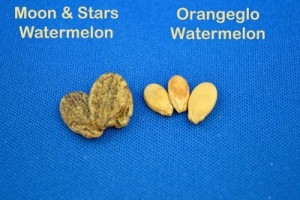To All the lovely people,
Here is an article that gives us all something to think about - how we place our seeds when planting. I hope you enjoy it and put it into practice when planting this years garden.
Speaking of your garden, with the lack of rain our soils are going to be dry and that means we need to be able to retain as much moisture in the soil for as long as we can. Using 3"-4” of compost as a mulch is a great way to provide nutrients and retain moisture for our plants. Garden soils rich in organic matter and that are mulched with compost and fed with compost tea (ACT) often only need watering every other week at most. Also, only water the root zones or down furrows using a hose or drip irrigation. If you have soil pathways they can be mulched with shredded paper or 2-4 sheets of newspaper and a 3"-6” covering of straw. If you water the ground to a depth of 1” before applying the mulch and wet down the paper and straw one time this material will break down as you walk on it over the next few months and improve the soil for the next growing season. Using a dust mulch is another way of retaining moisture if water is at a premium. Use a garden fork or hoe to keep the soil loose to a depth of 1.5"-2” and only water when the soil is dry at 3.5”-4” deep. Some tomato varieties (Early Girl is one) are very tasty when grown this way.
Actively Aerated Compost Tea (ACT) is made from worm castings and good quality compost. It is used as a foliar food, drench or just poured down the furrow when watering. It improves the microbe soil activity and stimulates plant growth. Write me if you have any questions about ACT or if you would like to get some.
Paul McCollum
--------------------
Seed Orientation During Planting Improves Germination
By Stephen Scott

All seeds have a built-in ability to orient themselves correctly and grow according to gravity. The roots will grow toward the pull of gravity and the stem or shoot will grow up and away from it. This is known as geotropism.
The radicle, or part of the seed that was attached to the parent plant, is where the root will emerge from. If the seed orientation has it pointed down, the new root will grow straight down with no wasted energy. If it is pointed upwards, the root and stem has to change direction which uses a lot of energy stored in the seed and decreases the vigor.
Most seeds are somewhat asymmetrical and are not likely to be planted with the radicle end up during natural dispersion or planting but can be when planted by humans, either by mistake or lack of knowledge. In natural systems, flat or oblong seeds will tend to be deposited in a horizontal position, so the stem and root will only need to change direction by 90° and won’t waste a lot of energy. Gardeners can help this system along when planting with proper seed orientation.

Seeds with points such as watermelon, cucumber, squash, pumpkin and corn should be planted point or radicle down. This gives the seed a head start as the root will emerge from the radicle and head straight down, while the shoot or stem will work toward the sun.
The radicle or point is toward the bottom of the photos.
Beans are a bit different, as the radicle or spot where the root emerges is on its side, except Fava beans which are on the end. Beans should be planted on their side with the radicle down, and Fava beans vertical with their dark spot on the bottom.
The dark spot on the Fava beans is the radicle and should be planted downwards. The radicle on the beans is the white spot and should be planted downwards.


